Abstract
In crude extracts of epidermal papillomas induced by an initiation-promotion protocol, ornithine decarboxylase (OrnDCase) activity was increased by the addition of GTP to the enzyme assay. No effect of GTP on the phorbol ester-induced enzyme isolated from normal epidermis was observed. Kinetic analyses indicated that the major effect of the nucleotide on the tumor-derived enzyme was to lower the apparent Km for L-ornithine. When papilloma OrnDCase was partially purified by gel-filtration chromatography, two forms of the enzyme were resolved, only one of which was found in an epidermal extract from phorbol 12-myristate 13-acetate-treated mice. The enzymatic properties of the two forms of papilloma enzyme were compared. The higher molecular weight form (peak I) was activated by GTP, while the lower molecular weight form (peak II) was not. As expected from the kinetic analyses of the crude papilloma extracts, the apparent Km of peak I enzyme for L-ornithine was very high (1.25 mM) but was much lower in the presence of GTP (0.02 mM). The two forms of papilloma OrnDCase differed in their sensitivities to heat inactivation and the ability of GTP to protect against heat inactivation. The K1/2 for activation of peak I OrnDCase by GTP was 0.1 microM. The activation process was irreversible and did not require Mg2+. When several nucleotides were tested for their ability to activate peak I OrnDCase, only GTP, dGTP, and the nonhydrolyzable derivative GTP[gamma-S] were effective, while GDP, GMP, ATP, and CTP were relatively ineffective. Our results demonstrated the existence of two forms of OrnDCase in epidermal tumor extracts, of which one can be activated by GTP and one cannot. The significance of these findings for the regulation of this enzyme in normal and tumor cells is discussed.
Full text
PDF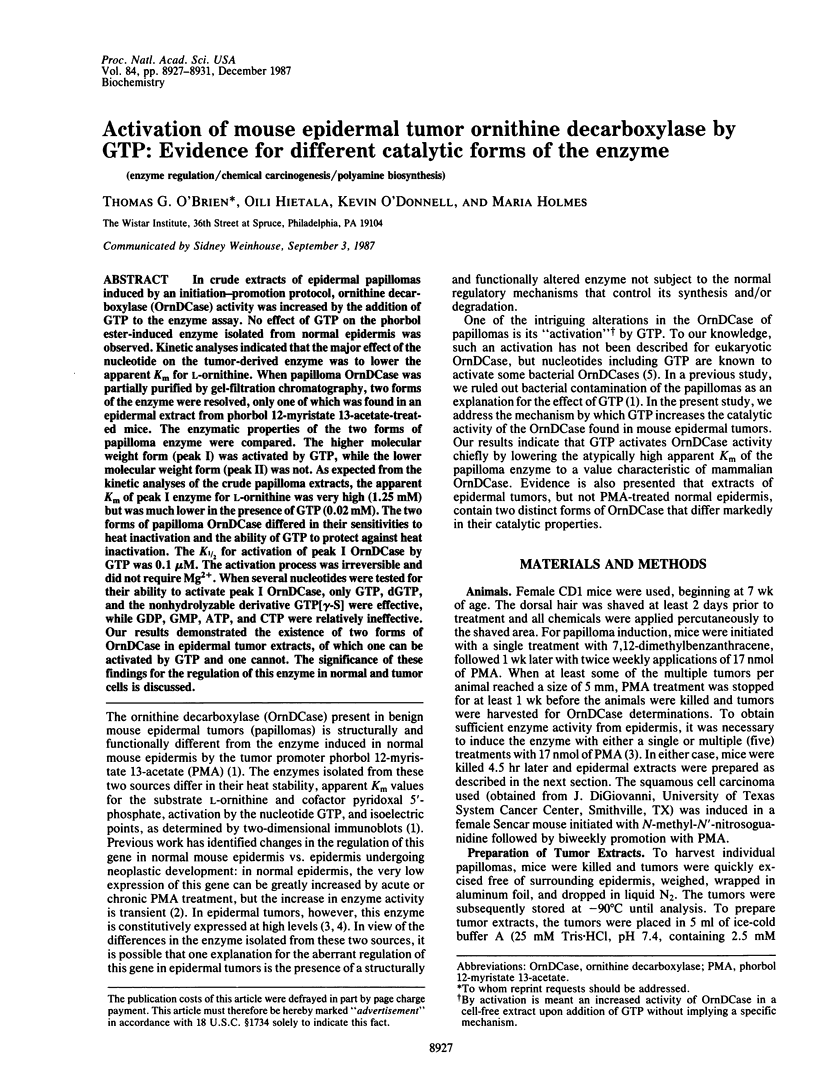
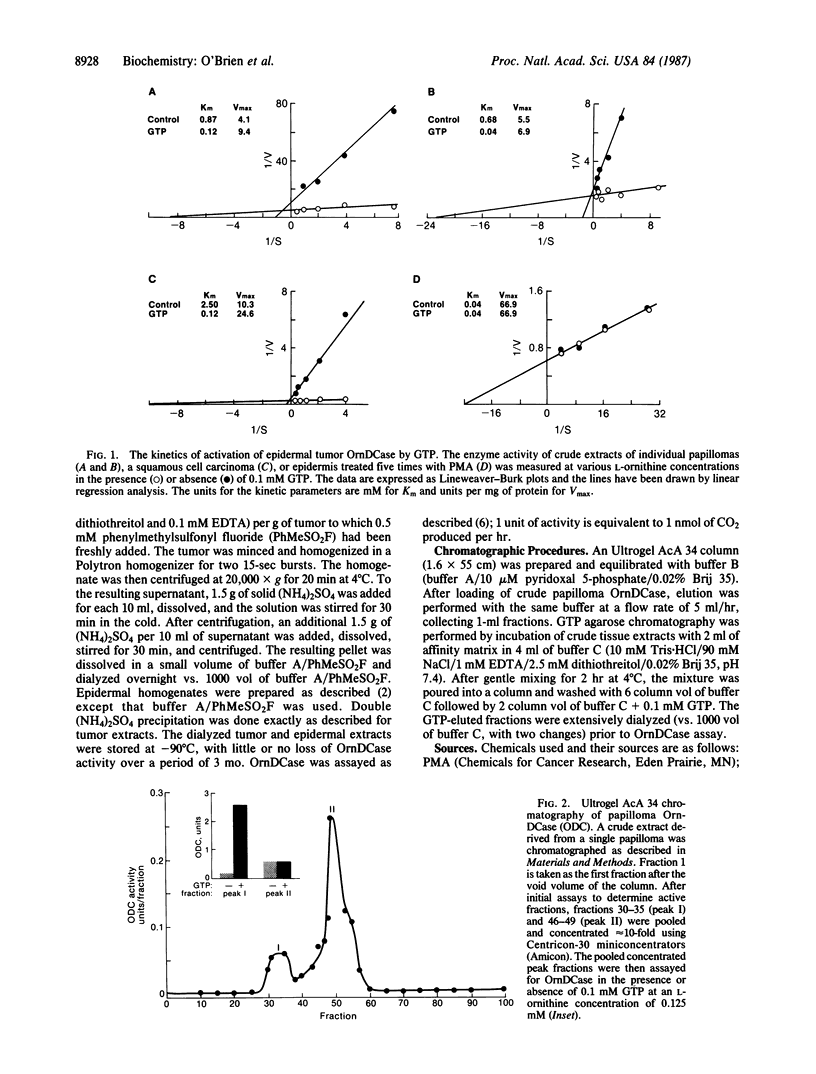
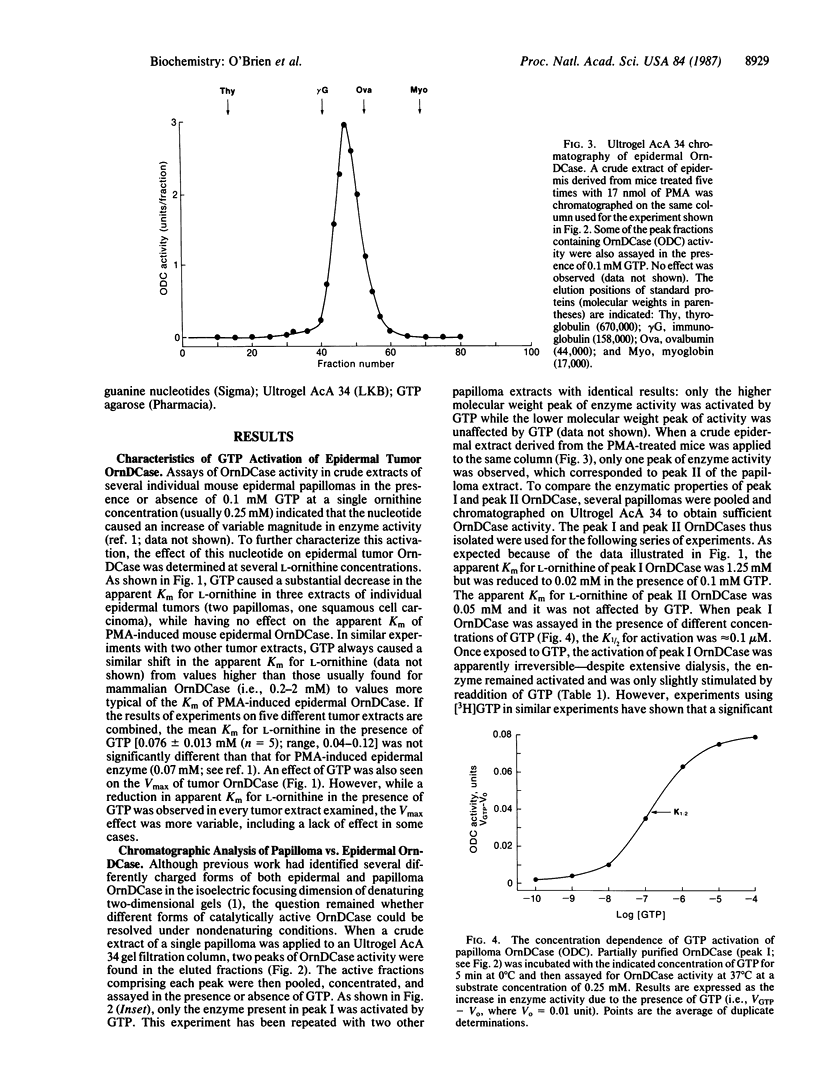
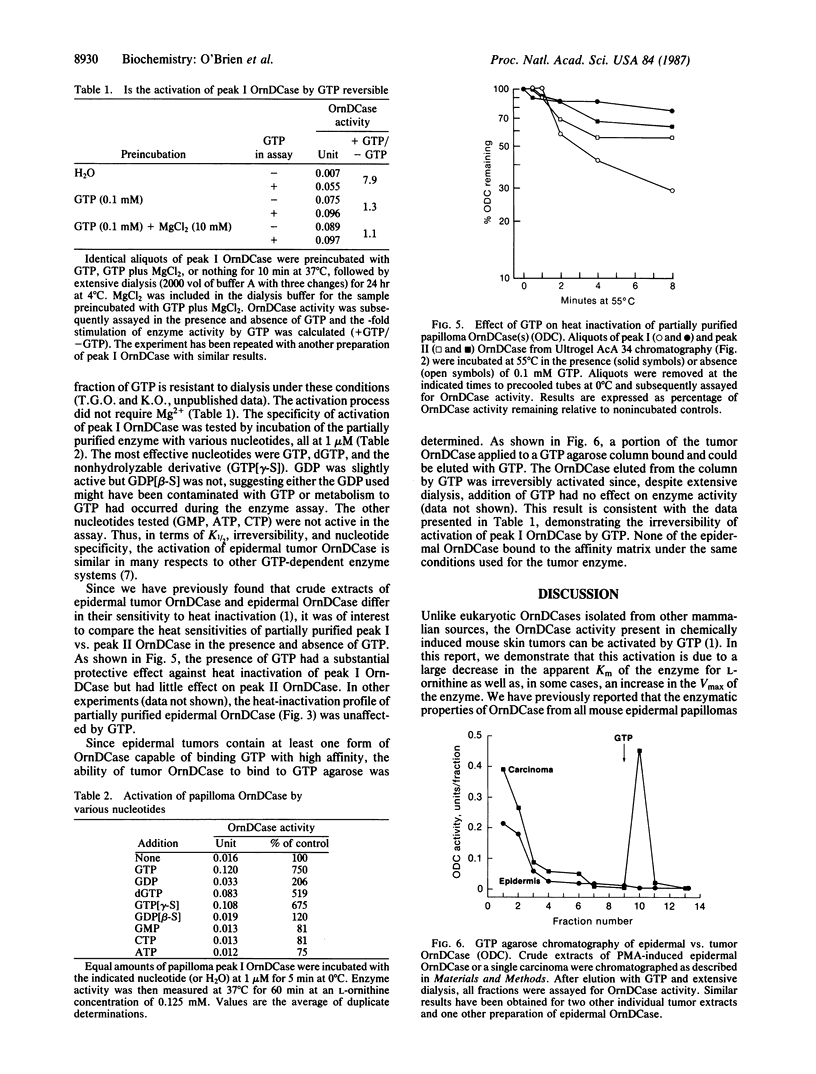
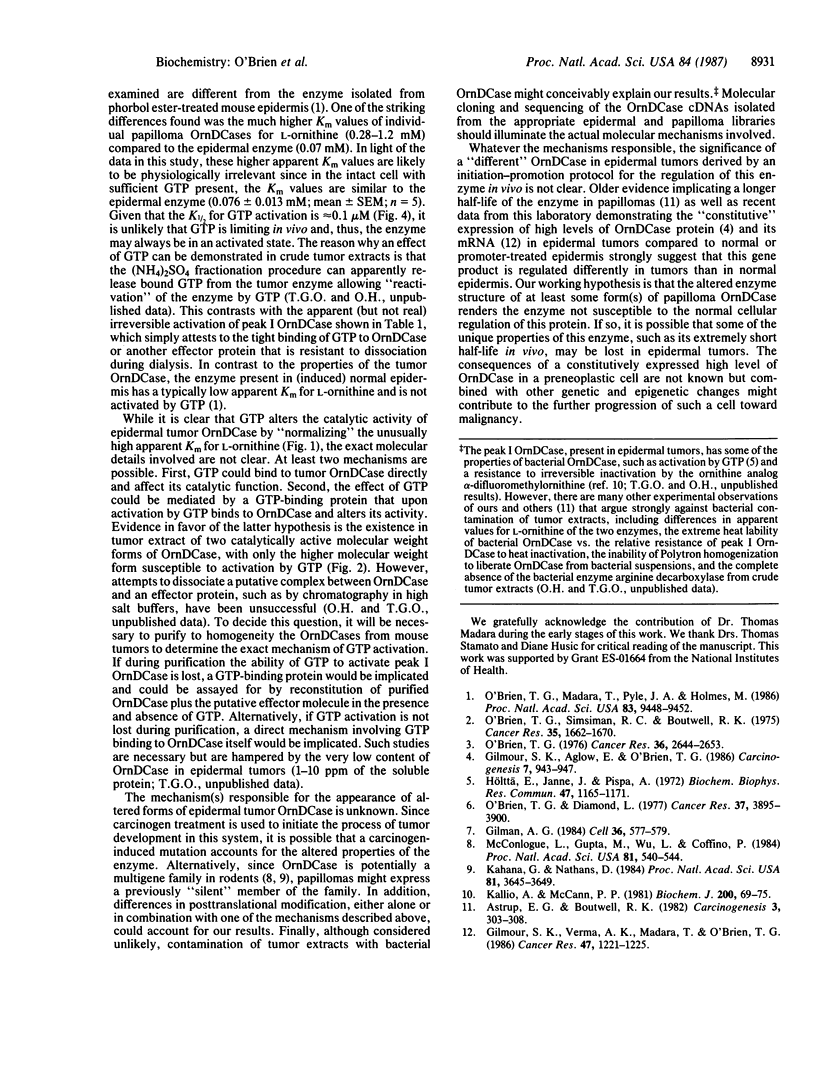
Selected References
These references are in PubMed. This may not be the complete list of references from this article.
- Astrup E. G., Boutwell R. K. Ornithine decarboxylase activity in chemically induced mouse skin papillomas. Carcinogenesis. 1982;3(3):303–308. doi: 10.1093/carcin/3.3.303. [DOI] [PubMed] [Google Scholar]
- Gilman A. G. G proteins and dual control of adenylate cyclase. Cell. 1984 Mar;36(3):577–579. doi: 10.1016/0092-8674(84)90336-2. [DOI] [PubMed] [Google Scholar]
- Gilmour S. K., Aglow E., O'Brien T. G. Heterogeneity of ornithine decarboxylase expression in 12-O-tetradecanoylphorbol-13-acetate-treated mouse skin and in epidermal tumors. Carcinogenesis. 1986 Jun;7(6):943–947. doi: 10.1093/carcin/7.6.943. [DOI] [PubMed] [Google Scholar]
- Gilmour S. K., Verma A. K., Madara T., O'Brien T. G. Regulation of ornithine decarboxylase gene expression in mouse epidermis and epidermal tumors during two-stage tumorigenesis. Cancer Res. 1987 Mar 1;47(5):1221–1225. [PubMed] [Google Scholar]
- Hölttä E., Jänne J., Pispa J. Ornithine decarboxylase from Escherichia coli: stimulation of the enzyme activity by nucleotides. Biochem Biophys Res Commun. 1972 Jun 9;47(5):1165–1171. doi: 10.1016/0006-291x(72)90957-6. [DOI] [PubMed] [Google Scholar]
- Kahana C., Nathans D. Isolation of cloned cDNA encoding mammalian ornithine decarboxylase. Proc Natl Acad Sci U S A. 1984 Jun;81(12):3645–3649. doi: 10.1073/pnas.81.12.3645. [DOI] [PMC free article] [PubMed] [Google Scholar]
- Kallio A., McCann P. P. Difluoromethylornithine irreversibly inactivates ornithine decarboxylase of Pseudomonas aeruginosa, but does not inhibit the enzymes of Escherichia coli. Biochem J. 1981 Oct 15;200(1):69–75. doi: 10.1042/bj2000069. [DOI] [PMC free article] [PubMed] [Google Scholar]
- McConlogue L., Gupta M., Wu L., Coffino P. Molecular cloning and expression of the mouse ornithine decarboxylase gene. Proc Natl Acad Sci U S A. 1984 Jan;81(2):540–544. doi: 10.1073/pnas.81.2.540. [DOI] [PMC free article] [PubMed] [Google Scholar]
- O'Brien T. G., Diamond L. Ornithine decarboxylase induction and DNA synthesis in hamster embryo cell cultures treated with tumor-promoting phorbol diesters. Cancer Res. 1977 Nov;37(11):3895–3900. [PubMed] [Google Scholar]
- O'Brien T. G., Madara T., Pyle J. A., Holmes M. Ornithine decarboxylase from mouse epidermis and epidermal papillomas: differences in enzymatic properties and structure. Proc Natl Acad Sci U S A. 1986 Dec;83(24):9448–9452. doi: 10.1073/pnas.83.24.9448. [DOI] [PMC free article] [PubMed] [Google Scholar]
- O'Brien T. G., Simsiman R. C., Boutwell R. K. Induction of the polyamine-biosynthetic enzymes in mouse epidermis by tumor-promoting agents. Cancer Res. 1975 Jul;35(7):1662–1670. [PubMed] [Google Scholar]
- O'Brien T. G. The induction of ornithine decarboxylase as an early, possibly obligatory, event in mouse skin carcinogenesis. Cancer Res. 1976 Jul;36(7 Pt 2):2644–2653. [PubMed] [Google Scholar]


